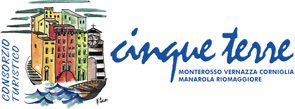The first historical documents on the Cinque Terre date back to the XI century. Monterosso and Vernazza sprang up first, whilst the other villages grew later, under military and political supremacy of Genova.
In the XVI century to oppose the attacks by the Turks, the inhabitants reinforced the old forts and built new defence towers. From the year 600 the Cinque Terre knew a decline which reversed only in the XIV century, thanks to the construction of the Military Arsenal of La Spezia and to the building of the railway line between Genova and La Spezia.
The railway allowed the inhabitants to escape their isolation, but also brought about abandonment of traditional activities. The consequence was an increase in poverty which pushed many to emigrate abroad, at least up to the 1970’s, when the development of tourism brought back wealth.
Dry stone walls
With respect to the past, today’s landscape of the Cinque Terre has changed considerably. The transformation, due to man’s work over the centuries, who has attempted to exploit the land to the utmost, is obvious on the hills, where a tight line of terraces called “ciàn” interrupt the steep slopes.
Flat land sustained by dry stone walls, on which rise allotments, vineyards, flights of steps, cottages, mule tracks.
A large environmental engineering work: 4,200 cubic metres of wall – 2 metres high per hectare for a total of 8,400,000 cubic metres, 3,163 linear metres of wall per hectare, for a total of 6,729 km of wall, above the ray of the Earth. Thanks to the happy supposition of the territory, sunny and protected from north winds, the “ciàn” have always been cultivated mostly in vineyards and olives, with the production of top quality oils and wines.
The Activities
If today tourism, is the main economy in the area, in the past it was constituted instead by fishing and farming, which have always been the main occupations of the coast-dwellers.
Still today, in fact, the remaining farmers prefer the cultivation of vinyeards, from which top quality wine is obtaine, olives from which excellent oil is deriven and lemons, cultivated in allotments and gardens. Instead professional fishermen have almost all disappeared, also due to laws and rules which are always more restrictive.
If in the year 1500 there were tunny fishing nets at Monterosso, nowadays there are few boats seen on the horizon and the women who in the “carugi” carried heavy boxes of fish on their heads. Only the anchovy fish from Monterosso has resisted, with its unmistakeable shiny grey colour and the excllent quality meats.





